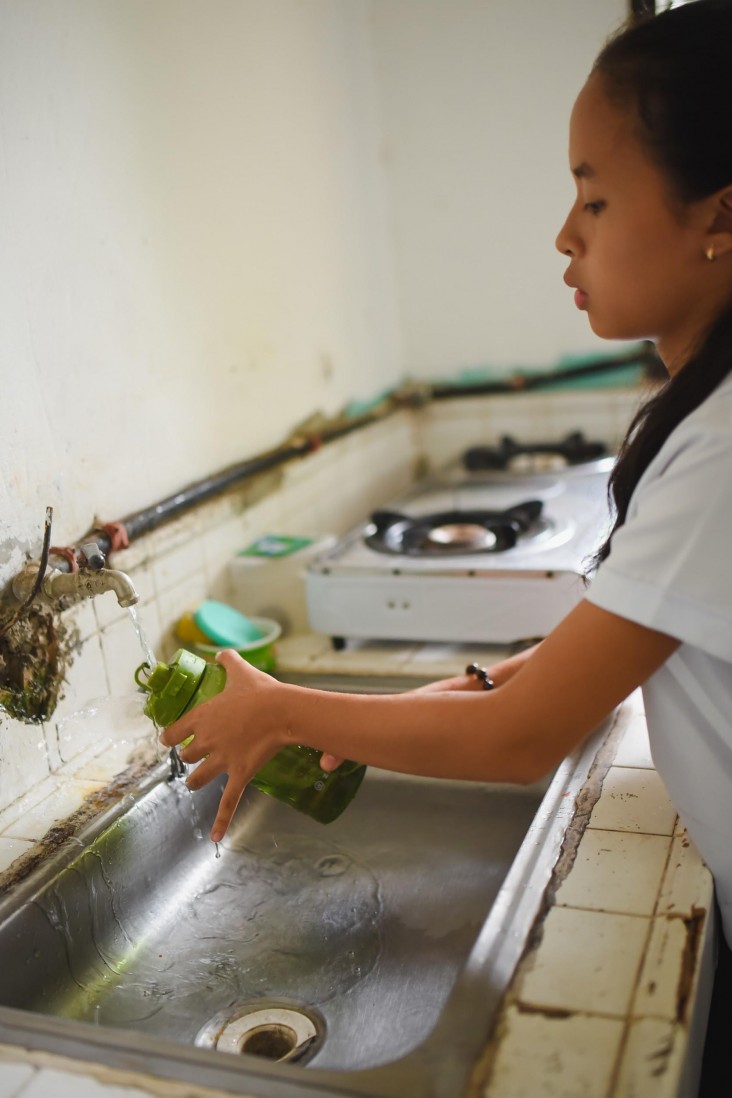
January 2017—Romyla Macanas and Ella Maeh Lopez know how essential clean water is for good hygiene. The two teenagers are in the 10th grade at Tolosa National High School in Leyte province in the central region of the Philippines.
In 2013, Typhoon Haiyan destroyed much of the region’s infrastructure. The water systems of schools were not spared, leaving students like Macanas and Lopez to return to classes in a school with no running water.
“We had to fetch pails of water to flush the toilet,” recalls Macanas.
The school’s lack of clean running water presented hygiene challenges for all returning students. For girls, however, particularly for those menstruating, no running water brought added hygiene challenges, social anxiety and extended time out of class.
Flora Pica, principal of Tolosa National High School, worried for the safety of the girls when they left school to find water. “Some girls would go home to wash themselves,” she says, “and many of them live 10 kilometers away.”
The lack of running water was disrupting education in schools throughout the region.
USAID responded through its Water Security for Resilient Economic Growth and Stability (Be Secure) project. The project began rehabilitating water systems in schools to provide clean and safe water for the students’ drinking and hygiene needs.
The project completed the water supply system for Tolosa National High School in July 2016. A reinforced concrete cistern was built to store water coming from the Leyte Metro Water District. Water from the cistern is pumped to an elevated steel tank that can withstand 196 miles-per-hour gusts of wind—similar to those of Typhoon Haiyan. Water then flows down from the elevated tank to the school buildings through a new network of pipes buried underground for protection from debris and flooding.
“Now that we have a steady supply of water, we can keep clean and concentrate on our studies,” says Macana.
Through Be Secure, USAID has helped rebuild climate-resilient water systems for 17 public schools and four health facilities affected by Typhoon Haiyan in Leyte. This assistance has benefitted over 28,000 students within the school year and about 650 patients per day.
Launched in July 2012, the five-year, $21.6 million project not only rehabilitates water systems damaged by disasters, it also improves access to water and wastewater treatment services. The project, which works in Leyte, Iloilo, Misamis Oriental, Zamboanga City, Maguindanao and Basilan, builds more resilient communities by promoting good governance and increasing long-term water security.
To date, around 1.5 million people have gained access to improved drinking water, and over 745,000 people have gained access to improved sanitation facilities as a result of this project. The U.S. Government has provided $143 million in assistance to support the relief, rehabilitation and reconstruction in areas affected by Typhoon Haiyan.
LINKS
Follow @USAID_Manila, on Facebook, on Flickr, on YouTube







Comment
Make a general inquiry or suggest an improvement.